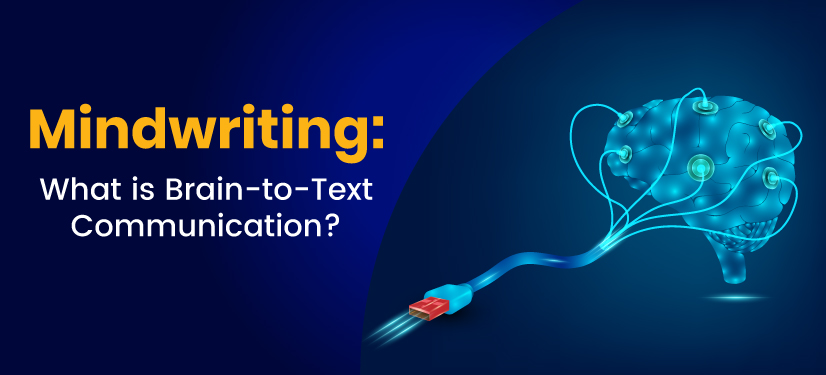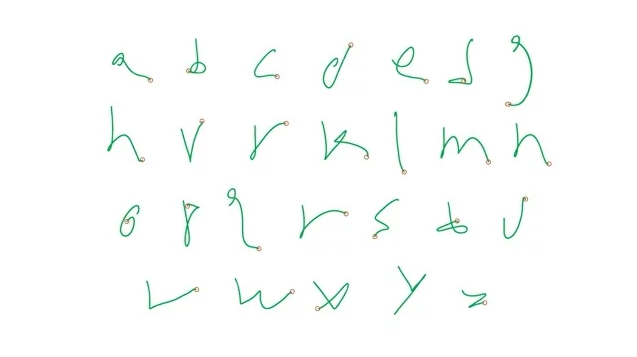
‘Science is magic that works,’ said the great sci-fi writer Kurt Vonnegut. Every day, scientists and researchers across the world bring these words to life. In one such recent episode, researchers from Stanford University have developed ‘Brain-Computer Interfaces’ (BCIs).
The BCIs help people who have lost the ability to move or speak to communicate. It helps the user by converting imagined handwriting into words! Sounds magical, doesn’t it? Here’s how it works.
How do BCIs do that?
BCIs help their users by restoring gross motor skills, such as reaching and grasping or point-and-click typing with a computer cursor. However, rapid sequences of highly dexterous behaviours, such as handwriting or touch typing, might enable faster rates of communication. Researchers of BCIs developed an ‘intracortical BCI’ that decodes attempted handwriting movements from neural activity in the motor cortex region of the brain and translates it to text in real-time, using a complex process called ‘neural network decoding.’
The subject of this study, named T5, is in his 60s and lost practically all movement below his neck after a spinal cord injury in 2007. T5 was able to write 18 words a minute when connected to the system. “While handwriting can approach 20 words per minute, we tend to speak around 125 words per minute, and this is another exciting direction that complements handwriting. If combined, these systems could together offer even more options for patients to communicate effectively,” commented co-author and Stanford professor of electrical engineering Krishna Shenoy, the study’s co-leader.
In the current study, T5 was asked to think about handwriting, imagining that he was holding a pen to a piece of paper. While his hands stayed motionless, his brain activity fired up. On individual letters, his “mindwriting” was more than 94% accurate.

Alphabets from T5’s mindwriting
Why is this study important?
Labelled as a remarkable advance in the field, this research has opened the door to decoding other imagined actions. Actions such as 10-finger touch typing and attempted speech for patients who had permanently lost their voices, can now be converted into text with the help of BCIs, said Frank Willett, a research scientist on the project at Stanford University. “Instead of detecting letters, the algorithm would be detecting syllables, or rather phonemes, the fundamental unit of speech,” he said.
Scientists have developed numerous software packages and devices to help paralysed people communicate, ranging from speech recognition programs to the muscle-driven cursor system created for the late Cambridge cosmologist Stephen Hawking, who used a screen on which a cursor automatically moved over the letters of the alphabet. To select one, and to build up words, he simply tensed his cheek. Here is a biographical sketch of Stephen Hawking to better understand his condition.
The BCI technology has advanced in a relatively short amount of time between T5’s injury and his enrolment in the study. One question in the study asked T5 to write what advice he would give to his younger self. The algorithm analyzed his response as “be patient, it will get better”.
While this remarkable research could potentially help many suffering from paralysis caused by a number of conditions, it will be some time before such brain-reading systems are ready for wider use. One unknown is how well the algorithm might work for languages not based on the Roman alphabet. For example, Tamil has 247 letters, many of which look similar, which could confuse the algorithm. “How we extend this work to assure the algorithms work well every day and for everyone is an exciting new challenge.” says Pavithra Rajeswaran, an expert in neural engineering at the University of Washington, commenting on the BCI research.
Did you enjoy reading this article? You may also like:
Charu, a feminist and an accidental writer, is yet to master the art of writing about herself. Always curious to learn new stuff, she ends up spending a lot of time unlearning the incorrect lessons. She enjoys all sorts of stories – real, fictional, new, old, hers and would love hearing yours too. Feel free to ping her at storyweavers@byjus.com to share anything that you think is worth sharing.
Comments
GAGAN.R.GOWDA
July 24, 2021
In future it may happen that all daliey tasks
Vikunth
July 24, 2021
I don’t want to become bald to type
Would better wse my hands ✋
But it would be great to not touch the keyboard
Alokendra Mandal
July 22, 2021
In future, it may happen that all the daily tasks we will be able to do by just thinking of it!